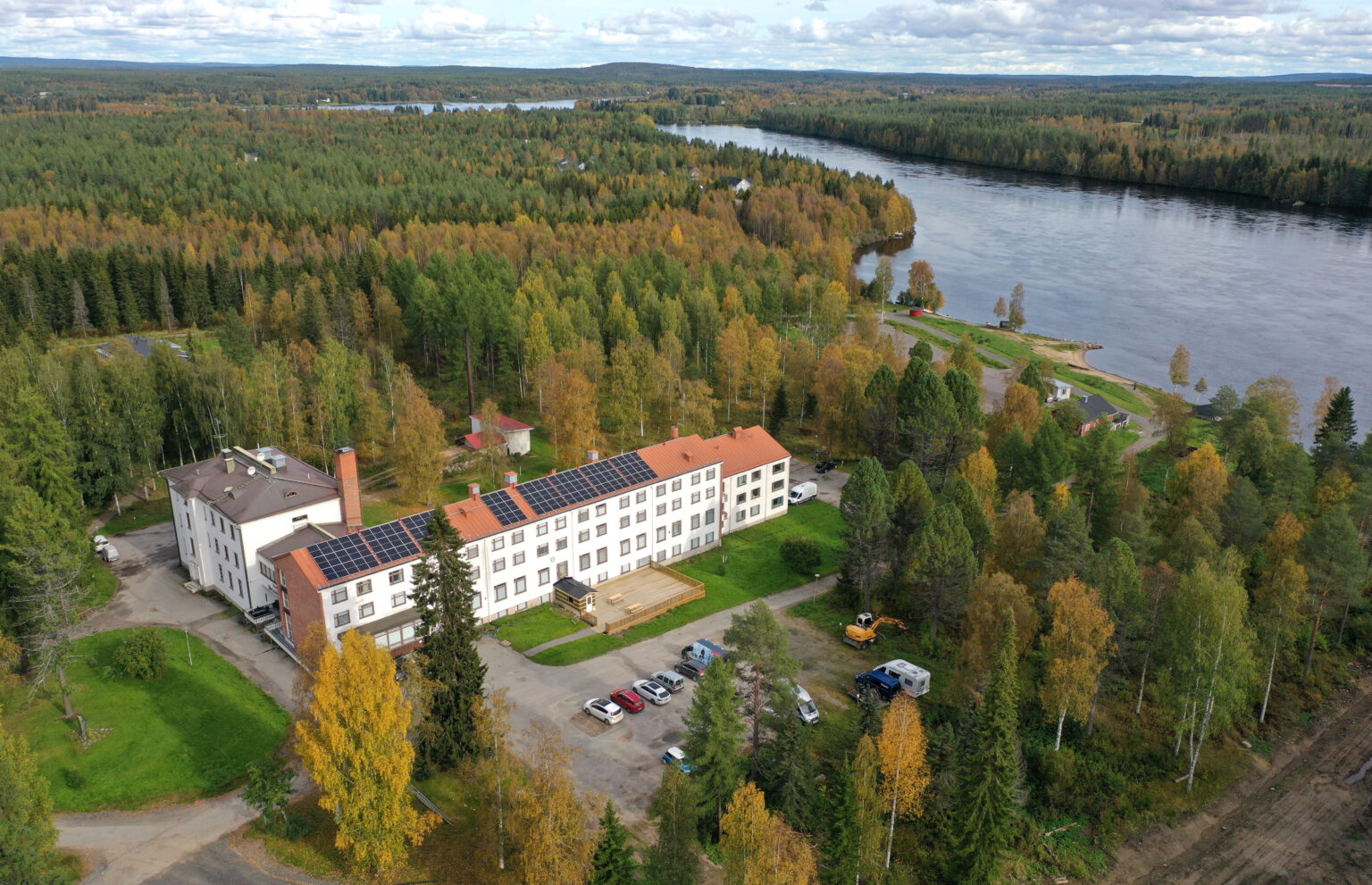
Hotel Metsähirvas sets an example in reducing CO₂ emissions
Low CO₂ emissions with local wood chips, in-house solar panels and certified green electricity
Located in the countryside of Rovaniemi, about 20 kilometers from Santa Claus Village, the family-owned Hotel Metsähirvas was opened in a former school building in 2018. Originally built in 1931, it is one of the few buildings in the Rovaniemi area that survived the destruction of World War II. When the family business, member of the Santa Claus Village Cooperative, bought the old school building in the mid-2010s, it was heated with oil.
The goal was to make the hotel as low-emission and energy-efficient as possible. According to the entrepreneur, Mikko Sirviö, the family considered geothermal heating and wood chips as alternative heating methods. Wood chips were chosen as they are better suited for heating old buildings. A wood-chip heating plant was built on the hotel grounds, replacing the previous oil heating system. The heating, which once consumed up to 160,000 liters of oil annually, was transformed to use local wood chips, sourced within an average radius of about 30 kilometers and a by-product of the wood processing industry.

Solar panels provide power and external electricity is certified green
The effort to reduce emissions didn’t stop with wood chips. In 2022, 96 solar panels were installed on the hotel’s roof, producing about 30 megawatt-hours of electricity annually. These panels generate nearly 20% of the hotel’s electricity needs, covering almost all of its electricity consumption in summer. Additionally, the external electricity purchased by the hotel is certified green, explains Mr. Sirviö.

Sustainable tourism efforts are never complete
There is always room for further development in reducing emissions, states Mikko Sirviö. For example, charging stations for electric vehicles will arrive at the hotel in the summer of 2025. Currently, tourists are transported by buses and minibuses that use traditional diesel fuel. Sirviö anticipates that the next step in reducing transportation emissions could be the adoption of heavy vehicles powered by biogas, until green hydrogen becomes more common in Arctic regions.
Hotel Metsähirvas holds Biosphere and Sustainable Travel Finland certificates for sustainable tourism. However, the family business understands that advancing sustainable tourism and the circular economy is a continuous process. Operational methods can always be improved, and emissions further reduced. Focusing on emission reductions and energy efficiency not only brings a brand advantage but also long-term cost savings for tourism businesses. Mikko Sirviö believes that sustainable tourism benefits consumers, the environment, and businesses alike. Read HERE for more information on how Hotel Metsähirvas is committed to sustainable tourism.
